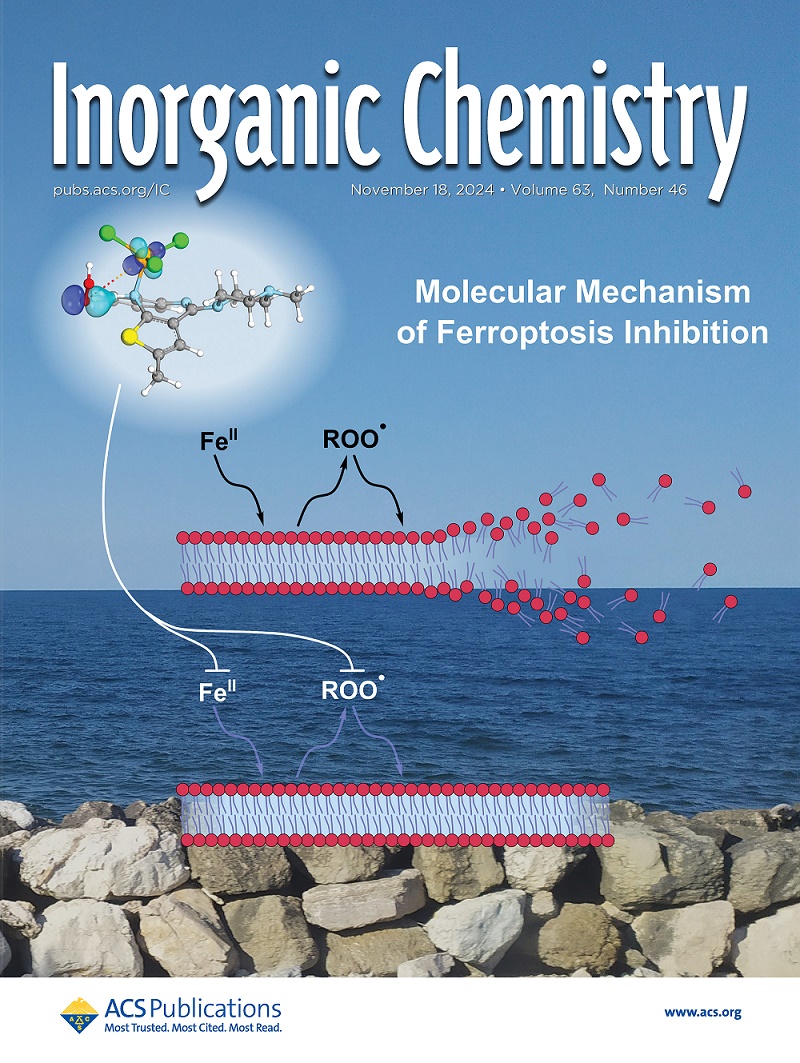Inverse Design of Molecular Qudits for Quantum Circuitry
IF 4.7
2区 化学
Q1 CHEMISTRY, INORGANIC & NUCLEAR
引用次数: 0
Abstract
The development of molecular quantum bits (qubits) for quantum information processing is a lofty goal. While many contemporary works investigate their potential for error correction, fault-tolerance, memories, etc., there is still a lack of experimental examples of molecular multiqubit sequences. Herein, we perform a theoretical investigation of spin Hamiltonian parameter space to identify molecules that could be used to implement a 4-level superdense coding algorithm that has the least stringent requirements for experimental implementation. To do so, we analyze the zero-field splitting (ZFS) Hamiltonian of an S = 3/2 spin system to determine its effectiveness as a molecular qudit capable of performing the superdense coding circuit with X-band pulsed electron paramagnetic resonance (EPR), accounting for realistic constraints imposed by EPR spectrometers. For an S = 3/2 system, the optimal ZFS parameters are |D| ≈ 0.115 cm–1 and |E| ≈ −0.0383 cm–1 (|E/D| ≈ 0.33 approaching the rhombic limit of 1/3), with a field around 160 mT. Our findings highlight the need to maximize the rhombicity of the spin Hamiltonian for four-level molecular qudits.

量子电路中分子量子位的逆设计
开发用于量子信息处理的分子量子比特是一个崇高的目标。虽然许多当代作品研究了它们在纠错、容错、记忆等方面的潜力,但仍然缺乏分子多量子位序列的实验实例。在此,我们对自旋哈密顿参数空间进行了理论研究,以确定可用于实现实验实现要求最低的4级超密编码算法的分子。为此,我们分析了S = 3/2自旋系统的零场分裂(ZFS)哈密顿量,以确定其作为能够使用x波段脉冲电子顺磁共振(EPR)执行超密编码电路的分子量子位的有效性,并考虑了EPR光谱仪施加的现实约束。对于S = 3/2的体系,最佳ZFS参数为|D|≈0.115 cm-1, |E|≈−0.0383 cm-1 (|E/D|≈0.33接近1/3的菱形极限),场约为160 mT。我们的研究结果突出了最大化四能级分子量子的自旋哈密顿量的菱形性的必要性。
本文章由计算机程序翻译,如有差异,请以英文原文为准。
求助全文
约1分钟内获得全文
求助全文
来源期刊

Inorganic Chemistry
化学-无机化学与核化学
CiteScore
7.60
自引率
13.00%
发文量
1960
审稿时长
1.9 months
期刊介绍:
Inorganic Chemistry publishes fundamental studies in all phases of inorganic chemistry. Coverage includes experimental and theoretical reports on quantitative studies of structure and thermodynamics, kinetics, mechanisms of inorganic reactions, bioinorganic chemistry, and relevant aspects of organometallic chemistry, solid-state phenomena, and chemical bonding theory. Emphasis is placed on the synthesis, structure, thermodynamics, reactivity, spectroscopy, and bonding properties of significant new and known compounds.
 求助内容:
求助内容: 应助结果提醒方式:
应助结果提醒方式:


